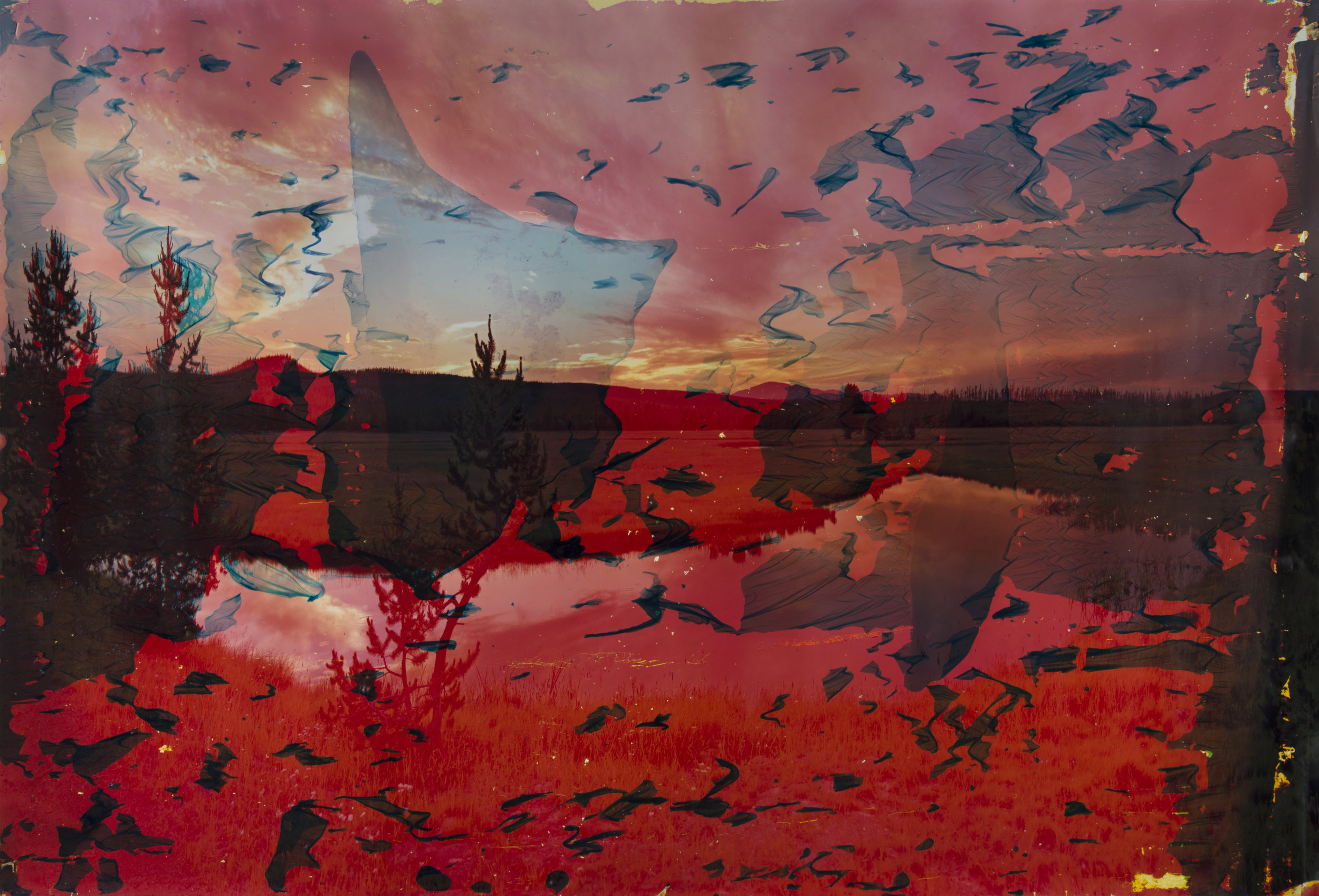Lakes and Reservoirs
Gibbon Lake, WY 1
2013
chromogenic print soaked in Gibbon Lake water
52 x 72 inches
Lake Isabella CA TC 5
2014
triptych c-print soaked in Lake Isabella water
91 3/4 x 62 1/2 inches each panel, 91 3/4 x 187 1/2 inches
Rainbow Lake WY G1, G2
2013
c-print soaked in Rainbow Lake water
grid of twenty four 20 x 30 c-prints, 60 x 240 inches
Yuba Lake, CA 2
2011
chromogenic print soaked in Yuba Lake water
30 x 40 inches
Crackling Lake, WY 5
2012
chromogenic print soaked in Crackling Lake water
72 x 105 inches
Grays Lake, ID BW A9
2013
chromogenic print soaked in Grays Lake water
42 x 60 inches
Nymph Lake, WY 4A
2013
chromogenic print soaked in Nymph Lake water
72 x 105 inches
Sylvan Lake, CA 5
2012
chromogenic print soaked in Sylvan Lake water
72 x 105 inches
“When Brandt creates a photograph for his “Lakes and Reservoirs” series, the water itself is part of the process. Out in the field, Brandt takes with him two key tools: a camera, and a five-gallon plastic jug. “The camera is to take an image of the lake or reservoir, while the jugs are to take some of the actual lake,” he explained. When he gets back to his studio, he makes prints of selected images, then empties the water he collected into a large tray. “The c-print of that same lake is then submerged into the tray with the lake’s water,” he said. “From this point I wait for the water to break down its own photographic image. Depending on the image density and water, this breakdown time can take days or weeks.”
—The New Yorker, Water Works: Matthew Brandt’s Experimental Landscapes, by Suzanne Shaheen
https://www.newyorker.com/culture/photo-booth/water-works-matthew-brandts-experimental-landscapes
“Typically, by the time a photograph is in the dark room, the subject of that photograph is long gone. But in Matthew Brandt’s series Lakes and Reservoirs, the dark room is where photo and subject meet.
Brandt leaves prints of landscapes shot around the country to decay, sometimes for days, sometimes for months, in H2O taken from the bodies of water they portray. The result is a psychedelic degradation of the images in a process that join subject and photograph in an intimate union.
Each image is dunked as a c-print, which are comprised of three layers of colored dyes and a light sensitive emulsion. These layers decay in the water drawn from the lakes and reservoirs, and interact to create new patterns of color and form that flow from within the already lovely photos. The results sometimes look like they've been painted with watercolors or burned with a flame. Some take on the effect of a monotonic filter, still others seem to erupt in bursts of light or become obliterated altogether. In each case the result is a surprise.”
—WIRED Magazine, Photos of Lakes Turn Psychedelic After Soaking in Their Waters, by Doug Bierend
https://www.wired.com/2014/09/matthew-brandt-lakes-and-reservoirs/








